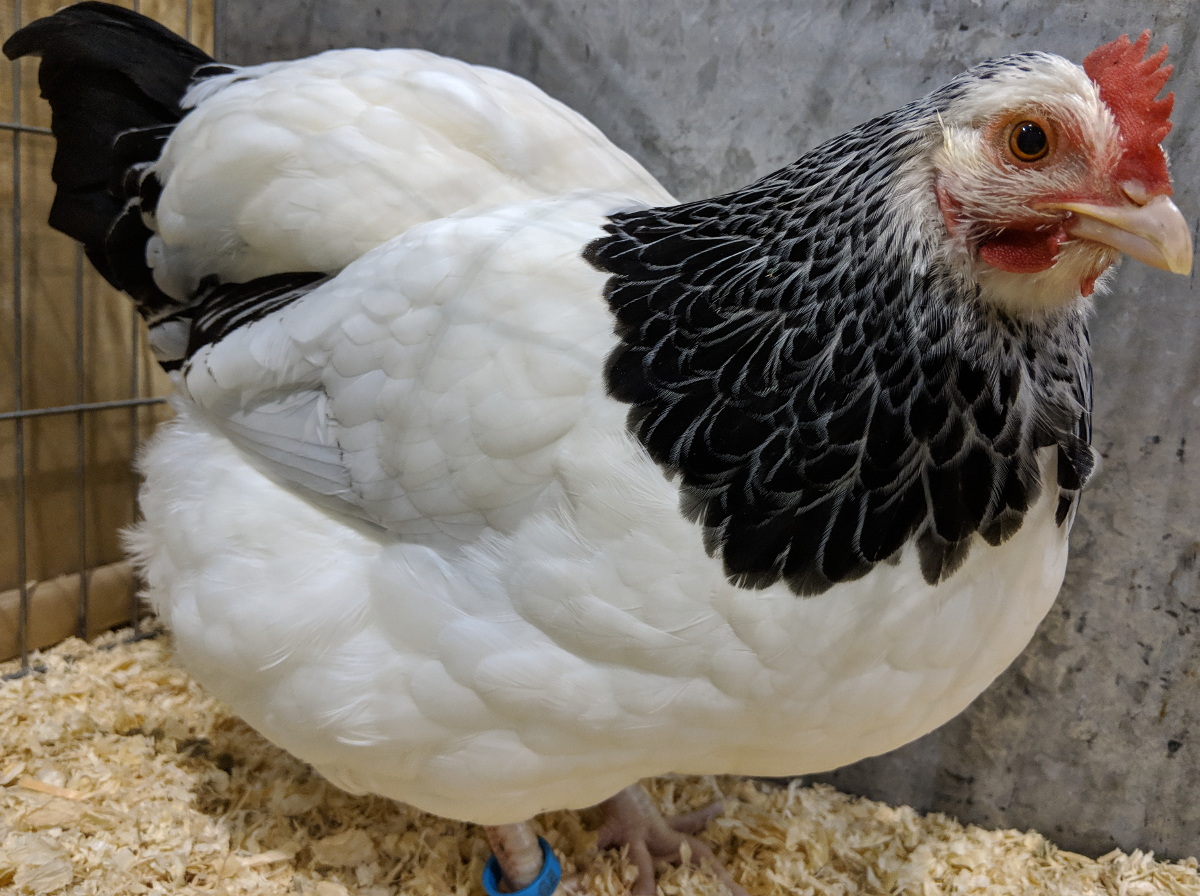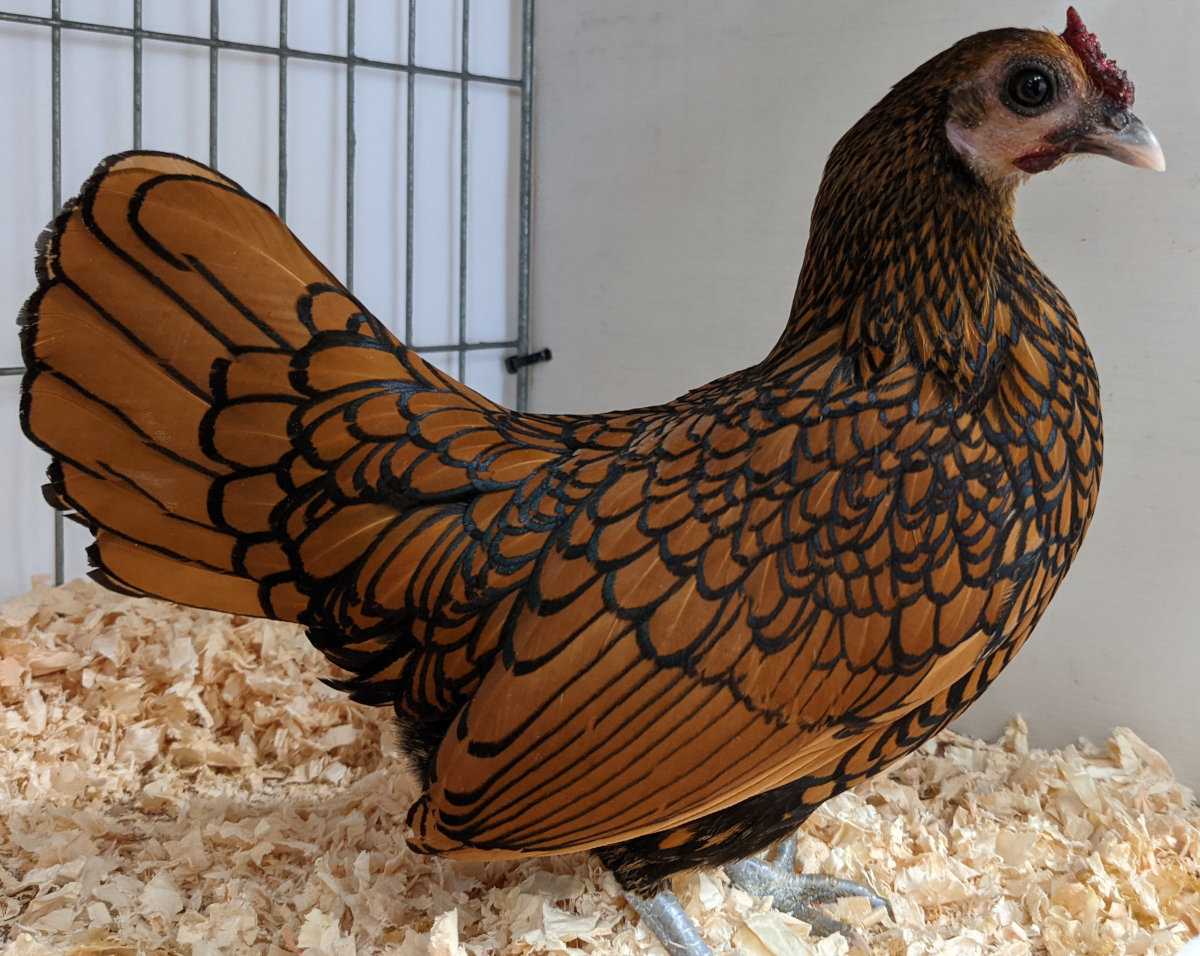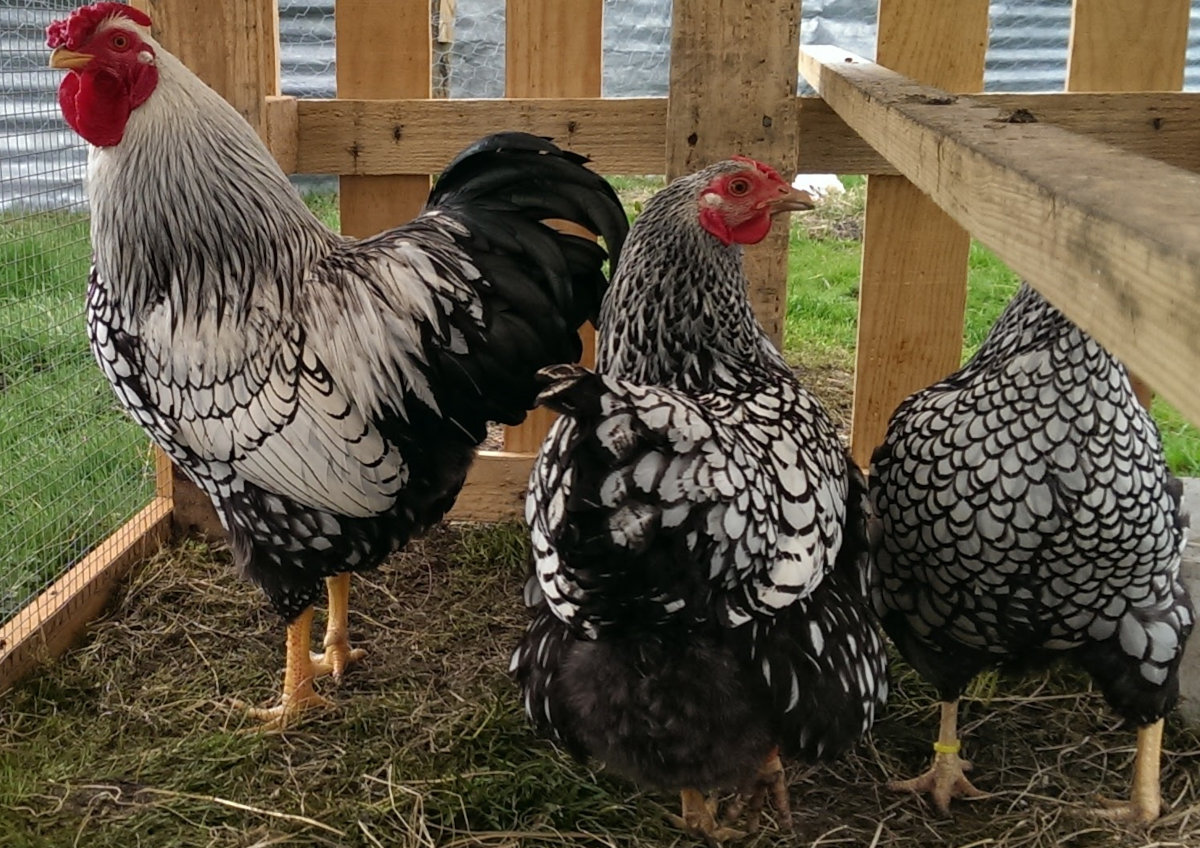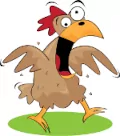Why keep bantam chickens

Table of Contents
- Why should you raise Bantam chickens?
- What are bantam chickens?
- What does the word Bantam mean?
- Reasons for keeping bantams chickens:
- Reasons for not keeping bantams:
- What are the characteristics of bantam chickens?
- Why choose bantams instead of large fowl?
- Bantam chickens eggs:
- Coop requirements for Bantams:
- Free ranging bantams:
- Feeding bantams:
- How tall are bantams?
- How are bantam chickens bred?
- Are there non-flighty bantams?
- Which bantam breeds are quiet?
- Can you keeps your Bantams in cages?
- Bantams and cats?
Why should you raise Bantam chickens?
Bantams are largely kept as ornamental chickens or as pets or for exhibition and show but they can hold their own as producers of eggs and even meat.
They are full of life and character and make great pets for those not wanting chickens for their utility. They provide entertainment on open range, eat bugs other large chickens can’t get to. Run faster and fly higher than standard large chickens.
There are “True-Bantams” in other words, there are bantam chickens that have no large standard counter-part. d’Uccle’s for example, or Sebrights. We always have bantams around to balance out the activity levels of our flock.
Below: True bantams like this beautiful little Sebright are often kept purely for ornamental reasons.

These bright eyed active little birds that will happily sleep in the rafters of your barn or coop.
Bantam Cochins (feather legged chickens) are the reason I started raising chickens many decades ago. They are round fluffy happy-go-lucky birds and enjoy being around people.
What are bantam chickens?
The Bantam is a small chicken, and the name comes from the city of Bantam or Banten in Indonesia.
Bantams are popular birds because they are small and come in a wide range of colours and feather patterns. Bantam can be stored in smaller gardens, which makes them popular with hobbyists or people just starting their business.
Bantams are used for their eggs, although their eggs are only half the size of other breeds.
What does the word Bantam mean?
Bantam is a classification as to size. There are large fowl and bantams in most breeds. Kind of a miniaturised version of a large fowl except for the true bantams which have no large fowl counterpart.
As is common with most types, Bantam chickens are named after the city of Bantam (Banten), a small port city in Java, Indonesia where the type is be lived to have originated.
Reasons for keeping bantams chickens:
There are many reasons why people keep bantam chickens:
- Small size: Bantam chickens are much smaller than regular chickens, which makes them a good choice for people with limited space.
- Less space required: Your family is downsizing or short on space and still want to keep hens.
- Eggs: You don't use that many eggs but still want them fresh. bantam eggs are just as nutritious and delicious as regular chicken eggs.
- Broody: Most go broody at some stage. A useful quality if you don't want the hassle of incubators.
- Hatching: Bantams are great mothers, I use them to hatch chicks all the time.
- Easy to keep: Some people are intimidated or bothered by large chickens and small ones are easier to manage.
- Less feed: They eat much less. I recommend them if potential keepers are on a budget.
- Handling: Easier to handle and tame and seem happier to be cuddled.
- Friendly personalities: Bantam chickens are known for their friendly personalities. They are often gentle and docile, and they make good pets for children.
- Ornamental value: Some people keep bantam chickens for their ornamental value. There are many different breeds of bantam chickens, each with its own unique appearance.
- They are good for show: Bantam chickens are often shown in poultry competitions. There are many different classes for bantam chickens, so there is a place for every breed.
- They can be raised for meat: Bantam chickens can be raised for meat. They are not as large as regular chickens, but they are still a good source of protein.
- They are good for pest control: Bantam chickens can help to control pests in your yard. They will eat insects, rodents, and other small animals.
If you are looking for a unique and interesting addition to your flock, bantam chickens are a great option. They are sure to bring you years of enjoyment.
Reasons for not keeping bantams:
I should mention that bantams are excellent foragers, and they can fly higher and farther than LF. They like to be out and about and will squeeze out of smaller holes to be free.
If you live in a city where you're only allowed a certain number of chickens rather than having a shortage of space, time or money then there is no benefit to bantams. If you can only have 6 chicken then bantams might not be enough for you.
They can also be taken by smaller predators.
If you get a bantam rooster, their crows can sound funny, especially the true bantams, it's more of a squeak.
I see my bantams more as pets, instead of livestock. That's just me. They're a tad more cuddly, and make great mamas, most of the time. And I do love my broodies. I had a few bantams in my first flock, none at the time, though.
There are many different breeds of this bird, each of which has its own special features. A few of the breeds are Cochin, Barnevelder, Japanese, Polish, D'uccle, Beijing, Common Bantam, Old English Game, Serama, Pekin, and Sussex. Everyone has different characteristics.
For example, the Pekin breed has feathers on its legs and feet, with plumage that hangs on to the ground. The polish chicken has black, white, laced and blue colours and produces pure white eggs.
What are the characteristics of bantam chickens?
They are one third to one fifth the size of standard large fowl and were bred mostly for ornamental purposes. The actual size difference varies and true bantams do not have a large fowl version.
There are some really small versions of large fowl breeds called miniatures but these are not recognised as types or breeds by any standards of perfection. They are just peoples personal projects.
Sebrights are one of my favourite true bantam breeds. I don't care about the size of the eggs and don't keep them for meat. I keep bantams because they're cute as a buttons and fun to have around.
They are a great conversation piece for visitors who are always in awe of their small size and unusual appearance.
Why choose bantams instead of large fowl?
Bantams are known for their personalities, and many people describe them as having a more diverse personality than other chickens. Bantams can be fearsome mothers and succeed in hatching most of the eggs placed under them.
Here is a table that summarises the pros and cons of bantams and large fowl:
| Feature | Bantams | Large Fowl |
|---|---|---|
| Size | Smaller | Larger |
| Space requirements | Less | More |
| Cost | Less | More |
| Handling | Easier | More difficult |
| Personality | More outgoing | More docile |
| Eggs | Smaller | Larger |
| Productivity | Less | More |
| Predation risk | Higher | Lower |
If you are interested in keeping your own chickens, bantams are a good bird to start with as they are smaller birds and do not need as large a space as other chickens.
Bantams are good mothers and you can them becoming broody, especially in spring. Bantams are also great for hatching other eggs including those of birds, quails, and geese. Fertile hatching eggs provide a wide range of chicken breeds.
Bantam chickens eggs:
Bantam eggs are naturally smaller than standard eggs. The size varies from 1/4 to 1/2 of the standard egg size depending on the breed.
In bantam eggs, the yolk is relatively larger compared to standard chicken eggs.
Below: Bantams like these Silver Laced Wyandottes can be productive egg layers.

Bantam eggs are like any other egg- that is, they can be eaten, hatched and sold.
Usually, bantam chicken eggs are treated in the same way with a standard egg.
The Silkie breed of Bantam is not a good egg layer but its definitely the egg hatcher you’d want to keep.
If properly fed and placed in the right coop conditions, bantams can lay eggs most days just like normal sized chickens.
Coop requirements for Bantams:
Bantam chickens are a great pet to keep at home. Not only will you receive a good number of fresh, organic eggs free of charge, but you will also get a pile of high-quality garden mulch. The requirements of the bantam coop are quite simple, and building a homemade shed is a good way to save money.
Because bantams are much smaller than ordinary chickens, your coop does not have to be so big. In fact, a single-frame coop will often serve you as well. A coop is simple to make and requires only basic raw materials, including:
- A few pieces of lumber,
- Chicken wire,
- A hammer and some nails or screws,
- Roofing materials like felt,
Of course, keeping a larger flock, in a single frame coop may not be enough. The size that follows the single-framed coop is the medium size box cage. In many respects, they are much more practical, not to mention attractiveness. You have to invest in more building materials, but the end result is worth it.
One of the things to keep in mind when growing bantam chickens is that they are small, making them easy prey for predators such as foxes, raccoon's, cats and flying predators like the red hawk.
To prevent the problem of predators, the coop should have a perimeter wire that is buried about one foot underground, so that predators will not be able to burrow their way into the coop. To shield bantams from the problem of flying predators, the wire mesh should cover the bantams from above. This has the added benefit of preventing chickens from flying and preventing other birds that could compete for food.
While building Bantam chicken coops, it must be remembered that they must be built to provide both dry and clean housing for the bantam at virtually each developmental stage.
The major function of the house will be to offer protection against harsh weather and the most important predators. The coop could also be made such that the bantams are not injured. Bantam coops could take various shapes and sizes, mainly because of the wide variety of bantams, the climate conditions of your region, and building materials at your disposal.
A touch of elegance and style can be used in building coops, like two-story coops or eve portable coops that look like a rustic red barn. You can really vent your imagination into the design of your coop, just make sure it's solid and weather-resistant. You can even think about raising the cage, which will prevent flooding when it rains and will ensure presence of some cold when temperatures are high.
Of course, the coop should be raised high enough above the ground to allow good air circulation and also to keep the coop dry. Clean straw should be regularly supplied and changed to avoid the risk of disease. If there is a danger of predators, proper protection using wire cables should be provided. With good care, you can expect a member of bantam chicken breed to live for about 10 years.
Now you are ready building, remember that coops are usually made of wood. A large coop means greater expenses. Don't compromise quality for cost. Use good material, even though expensive, as you'll reap the benefits in the long run. you can visit your local carpenter to find out the best products they could be having for your project.
Remember to turn on the lighting for the coop. Bantams will require about 15 hours of daylight per day to continue laying eggs. Proper lighting helps in growth and raising egg production.
Free ranging bantams:
You could lose them. That's the down side. But like all chickens, bantams like to roam and be free.
I live in the North of England and luckily I don't have much in the way of a problem with predators so I have no problems free ranging my bantams. Most other parts of the world struggle more with getting their birds eaten.
Mine stay in their fields and put themselves to bed at night.
If they are new to your property make sure they know where home is before you let them go though. With some bantams you may have to keep an eye on them because they like to go broody where ever they can and may go missing.
A friend of mine who keeps chickens in the US said this:
"I have standard chickens and banties, the large fowl free range but the bantams are kept penned up, mostly because I got some half baked advice from someone saying banties are wild and they will take off as soon as we let them out.
With bantams and true bantams the only big thing to worry about is hawks and eagles! They will take small chickens even with the dogs and people around. Large birds of prey aren't scared of dogs or humans. I lost most of my chickens to predators which is why I don't free range all the time anymore. I have the entire area covered with a huge net, so the hawks won't get them.
I only let my chickens free range when I'm home. We do have red tailed hawks and my backyard has lots of bushes, tall trees and vine maples and they are not as common this time of year. They do have a run that I covered in the spring, but they would much rather be out. I am also worried about the chickens flying into a neighbours yard. Both of my neighbours have dogs. Dogs don't need to be big to be chicken killers. I do have a 7 foot metal fence, but I wouldn't put it past them to try and explore. "
So I would say, depending on the size of your yard it would be fine to let them free range as long as you are home, have a tall secure chicken proof fence, and have lots of cover.
With the increased demand for organic chicken eggs and meat and the desire to have sustainably sourced food, many people have adopted the organic and free range way for their home produce. Free-range bantams are allowed to roam around and obtain a natural diet, including grains.
Interested in growing purely organic bantams? The first thing that you should think of is practising free ranging farming style. Allow the bantams to roam around without enclosing them in a coop. You can train you bantams not to go too far from the coop, so you will not have to worry about their whereabouts.
What you only need to make sure in free-ranging is that you bantams are free from predators. Only allow your flock to roam outside when you are certain about the safety of the outside vicinity.
Free-range raised bantams give people a healthier choice for eggs and meat.
Feeding bantams:
Fortunately, feeding bantams and satisfying their nutritional needs is easy and Bantams do not have any special requirements when it comes to feeding other than needing a smaller feed size.
Other supplements, such as scraped grains or regular cracked corn, are also other additions to a regular portion of pellets or mash that can be bought. Some people even plant part of their garden just for their bantams!
You can try different chicken feeds to find what your flock likes best. Chicks need special food, and the layers need a different kind. Fortunately, information about what to feed and when are always printed directly on the bag, so you know what you are feeding.
Bantams always need clean, fresh water, and because they are very interesting creatures, they usually quickly throw dirt into the water. To remedy this situation, you should design the water trough in such a way that you can avoid it.
How tall are bantams?
I know they are small but I was wondering in how many inches.
It depends on the breed a Japanese is going to be much shorter than a Malay bantam. As a rule of thumb bantams are normally 1/5th it's large fowl counterpart unless it's a true bantam than there's no large fowl counterpart.
Bantams are proportionately bigger in the head and proportionately to the body they lay bigger eggs. What breed did you have in mind?
How are bantam chickens bred?
If you were wondering how bantam breeds are made or bred, it is simply a matter of breeding the smallest chicken in your flock with each other till you work out which have the bantam gene. Bantams have been shrunk in size by years of selective breeding and are smaller versions of a large fowl, such as Sussex bantams or Wyandottes.
Some bantams are 'true bantams' which means they are naturally that size. They were made that size by nature in the first place and have no large fowl version, such as Sebright or Serama. It may simply be that the large fowl was lost in history. The Japanese bantam for example was bred because all eggs over a certain size were property of the emperor and as a result the peasant bred small chickens that were easily kept and laid small eggs.
This is achieved by choosing good examples of the large fowl but those birds that are naturally smaller and breeding them with other naturally smaller ones, then picking the smallest from that mating to perpetuate the smaller size.
Exactly that...selective breeding. And yes, it can take years and years to achieve your goals. This is how we have ended up with so many different shapes and sizes of dogs and, to a lesser degree, cats and such a variety within so many different animal types.
Are there non-flighty bantams?
I have kept dozens of different chickens and breeds over the years and have been researching different breeds regarding flight. As a rule bantams are better flyers and some breeds are more skittish than others.
I would also agree with Silkie or Bantam Cochin. In my experience puffball bantams have less flying ability. Bantam Wyandottes is another type that can fly but generally choose not to.
Old English Game, Dutch and the other birdlike or streamlined chickens have pretty good flying ability and can easily make it up into trees or over the fence.
A word of caution though - even the ones that don't really fly CAN generally hop from branch to branch or object to object if there is something to get on top of. So keep things near the fence trimmed and don't assume that just because your bantam looks like a beach ball it can't look for trouble.
I would say Silkies are the most non flighty chicken there is. They're, friendly, funny as all heck and they cant fly worth beans.
My Serama are fun to but they fly really well so that wouldn't work for you.
It often comes down to how they are raised and looked after as to how much time they spend in the air. Cramped chickens will try to get about, it is in their nature.
Which bantam breeds are quiet?
A friend of a friend has asked me what breed of chicken would be suitable for a roof top garden in an apartment block.
I'm thinking bantam but I don't know which ones are the quietest. Silkies would probably be on the quieter side but what else?
I'd say Silkies are the best all around chicken. Compared to standards most bantam hens are very quiet.
My Serama are so quiet, even the roos. They sound like squeaky toys. I might be worried about bantams on a roof top garden though, most can fly pretty good because of their small size.
Maybe silkie hens would be best, mine hardly make a sound and prefer to stay on the ground rather than perch. They don't really "fly" at all due to their silky feathers without shafts it's more like rabbit fur, plus they are a very unique looking bird.
If I had a rooftop city garden and wanted chickens in it, I would get sex links for their egg production. I only have 1 red sex link, but she is the sweetest hen I own. She's not very loud at all, though she does like to talk a lot.
My Faverolle is extremely loud and sounds like a goose. My sultan and Dutch hens are all pretty quiet and docile, but their eggs are teeny tiny, not really what I'd want if I had limited space and wanted eggs.
They make noises that sound like a baby dove, sort of a quiet purr. They follow me around, talking quietly to me all the time, wanting to get picked up or to sit on my shoulder every once in awhile.
Those of you with other bantam breeds, which ones lay medium to larger eggs? I was thinking of getting some RIR, New Hampshire's,Naked Necks,Leghorn, Wyandottes, White Faced Spanish and maybe Brahmas or Buckeyes, depending on egg sizes.
Can you keeps your Bantams in cages?
Cochins, and Silkies and other bantams would work in cages as long as they are large enough to comfortably house them. They need to flap, scratch, perch and move around.
I have a trio of Serama in a chick-n-hutch in the basement for the winter. They are doing fine, though I may need to trim their nails before spring. They are next to a large sunny window and I give them veggies in a suet holder. I also have their offspring, a cockerel, I keep in a large chinchilla cage (minus the shelves) with a roost. He is right next to the original trio, so they can see each other.
Bantams and cats?
I have lots of cats around here, both strays and pets. None of them really bother the chickens. I've never ever had a problem with my cats attacking my chickens or even threatening them. Cats might bother the true bantams as they are smaller.
For a full article about chickens and cats here.
The bantams are pretty quick and fly well, so I don't know if a cat could actually get an adult. I'd be concerned with young ones for sure - especially with a stray that's not well fed.
